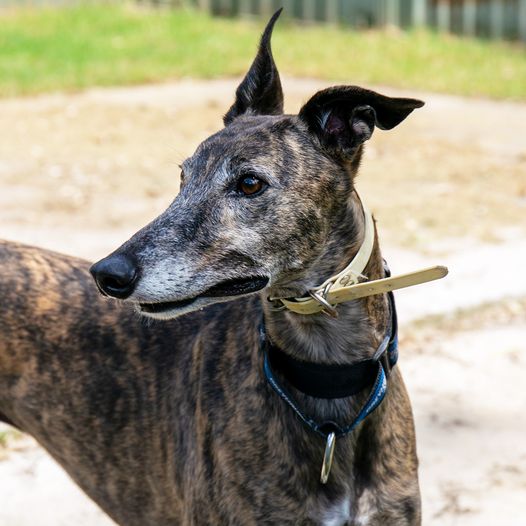
Inmates at the Hunter Correctional Centre at Cessnock are gaining valuable animal husbandry skills, while at the same time giving former racing greyhounds a second chance at life.
The Greyhounds as Pets program has taken two years to get up and running at the Hunter gaol with inmates spending around 400 hours building kennels and getting infrastructure ready to have up to six greyhounds at a time living at the centre.
Former Governor Linda Ferrett brought the initiative to the centre before she took on another role in NSW Corrective Services, after owning a rehabilitated greyhound herself.
“I’m really glad to see there’s some positive action to rehome these animals and the benefits to both inmates and staff from a therapeutic point of view … you can’t measure that,” Linda Ferrett said.
“Our staff work in sometimes aggressive and challenging environments, it will be good for staff to come out off their post, when relieved of course, and just spend some time chilling out with ‘the kids’ – the ‘furbabies’.”
CSNSW offender services and programs, Kristy Tindall, said the arrival of greyhounds is the culmination of two years of work by staff and inmates.
“They were a little bit nervous when they first arrived but the inmates welcomed them with open arms and we’ve made a really beautiful home for them here, so they very quickly settled down,” Kristy Tindall said.
“Everyone has worked really hard for this for the past two years and just finally we can now enjoy the greyhounds here and hopefully find a home for them all.”
Under the supervision of trade-qualified overseers, an inmate work crew contributed more than 400 hours’ work to the construction of the kennels and gained skills in excavation, formwork, pouring concrete, and installing drains, downpipes and chain-link fencing.
Carefully selected inmates gained valuable animal husbandry through a Dogs as Pets course and GAP training, and will now spend six weeks teaching former racers how to live a domesticated life.
“It’s a sense of achievement that we’ve done something good and if I ever get a job working with animals in the future, I’ll know a bit about it,” one participant said.
“You know you’ve done something good and helped an animal that hasn’t had a love of their life before.”
The program also takes the pressure off local animal rescues working to rehabilitate greyhounds.
Image: Greyhounds as Pets

